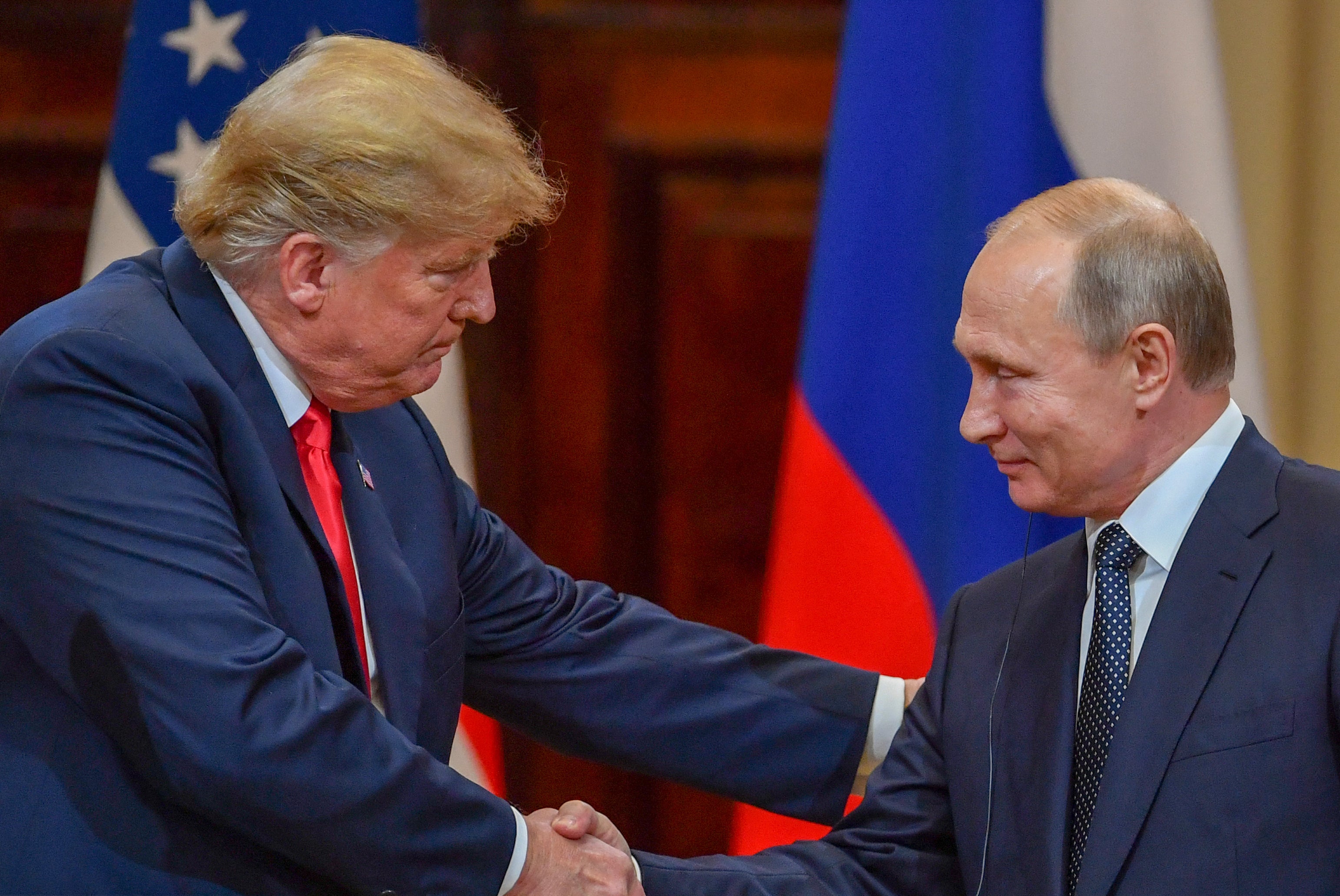Both the White House and the Kremlin have confirmed that a US-Russia summit will take place in the coming days, with reports suggesting a possible three-way meeting that would also include Ukraine’s President Zelensky. The news follows three hours of talks between Vladimir Putin and Trump’s special envoy Steve Witkoff, following his fourth visit to Moscow.
If either summit happens, this could mark the most progress towards ending the war since Donald Trump came to office and pledged, unsuccessfully, to end the conflict within 24 hours. But this trilateral encounter is another high-stakes gamble.
Top-level diplomacy does not usually happen like this. The lead time for an old-fashioned US-Russia summit would commonly be months, with the Kremlin in particular favouring meticulous preparation. So what has changed?
An obvious answer would be Trump’s ultimatum to Putin to agree to a ceasefire in Ukraine by this Friday, “or else” – that last remaining unspecified, but thought to include new economic sanctions, including on countries, such as India, that continue to buy Russian oil.
There was also Trump’s announcement that two nuclear submarines were to be repositioned, apparently in response to threats made, not for the first time, by former president Dmitry Medvedev, now deputy chair of Russia’s security council.
However, there is no way any Kremlin leader, least of all Putin, could be seen to be yielding to outside pressure. Putin’s insouciance over Trump’s deadline on Ukraine, and the Kremlin’s studied non-reaction to the nuclear deployments, spoke volumes. Above all, a summit on the old superpower model is no concession on Putin’s part, but something he has long sought.
A question often asked, but rarely answered, is what cards Trump has to play concerning Russia and the war in Ukraine. The threat of further Western sanctions has proved ineffective in forcing any change. The US is no longer funding weapons for Ukraine – it has passed that responsibility to the Europeans – to what effect remains to be seen. The war has slowly turned in Russia’s favour, leaving little incentive for it to halt hostilities now.
But the US has at least two things to offer that Russia craves. The first is enshrined in a bilateral summit, which would signal a return to recognition of Russia as an international power with interests of its own and a demonstrative end to the isolation that the Biden administration and the Europeans tried to impose. The second is a willingness to address what Russia sees as wider issues affecting security.
The two decades that Putin has been in power have seen the steady dismantling of almost all the security architecture built during the Cold War. Russia wants some of this back, which is what it means when it talks about the need to solve issues underlying the Ukraine war – not just ending the war itself.

While it can reasonably be argued that Russia brought this insecurity on itself with its all-out invasion of Ukraine in February 2022, Russia’s view is that its security concerns go back to at least 2008, when Nato hedged about eventual membership for Ukraine and then when Ukraine abandoned its neutral status in 2014.
For Putin to agree to a summit with Trump, the agenda has to go beyond Ukraine and encompass wider issues of security. A bilateral summit along these lines could just be enough to make what would undoubtedly be a concession on Putin’s part – a trilateral summit with Zelensky – worth showing up for.
Compared with the reasons that might take Putin to either summit, the rationale for Trump and Zelensky is far clearer. Despite his use of force against Iran, Trump sees himself as a peacemaker – with a Nobel Prize in his sights. Reconnecting with Russia also serves US interests in potentially loosening Putin’s need for China.
Zelensky has rightly always objected to talks about Ukraine being held without Ukraine. Having mended his fences with Trump after February’s Oval Office ambush, he is also less wary of the president’s motives than he was. Looming over all, though, is the state of the war, which is not moving in Kyiv’s direction, and the first real intimations of domestic discontent in recent anti-corruption protests.
Nor would there appear to be any legal bar. A presidential decree that forbade any Ukrainian leader from talking to Putin has been disregarded since May, when Zelensky said he was prepared to meet Putin – although those talks, planned for Istanbul, did not happen at that level.
As for a venue, Trump might well favour the White House; Putin would doubtless prefer a neutral location, such as Geneva or somewhere in the Gulf. Zelensky will go anywhere to defend Ukraine’s interests. The prospect is so momentous that it seems almost to tempt fate to mention it. Could it be that after three and a half years, the war in Ukraine is nearing its end?


